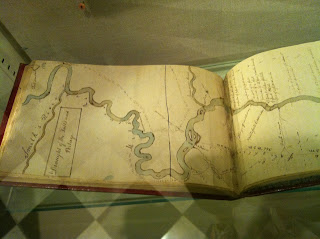Myth #1- Valley Forge is famous for being super cold and wintery.
In truth, Valley Forge was one of the warmest winters that the Continental Army faced- which turned out to be the problem. Without the ground freezing, supplies couldn't travel along the muddy roads and disease spread rapidly.
Myth #2- The soldiers were all alone in camp.
False! In almost all winter camps, women and children were there as well. In fact, Martha Washington went to every winter camp and stayed with her husband, George Washington. Women followed the army often with their children for a few reasons, but the main reason was for security. They provided morale, did laundry, sewed, and nursed the troops. THEY DID NOT cook however, since soldiers were expected to do this.
Myth #3- Valley Forge was in an area where the British couldn't see them.
Actually, Valley Forge is only about 18-20 miles away from Philadelphia where the British were having there winter camp. Valley Forge was picked because it had good water sources, a vantage point of the British (only about a days march), and plenty of forage (food) nearby.
Myth #4- Valley Forge was a famous battle.
Valley Forge was simply where the Continental Army camped. In those days, during the winter armies would camp for the winter and then resume fighting in the spring, summer, and fall.
Here is what the cabins looked like. The cabins were two rows wide for a mile down this road when they were first constructed back in December of 1777-1778.
The men were instructed to build each cabin 14 feet wide, 16 feet deep, and 6 1/2 feet high. Twelve men would live in each hut. There were no windows, just a door and a fireplace. Each hut had four sets of triple bunks. Here are two pictures: The first is what the cabins looked like inside, and the second are two teachers who bravely climbed into the bunk. A tight fit for sure!!
One of the worst problems they faced was disease during the stay at Valley Forge. One thing that contributed to disease was that soldiers were not going to use the latrines (which were far from camp) at night. Instead they would use the bathroom outside of their cabin. It became such a problem that George Washington ordered that any man caught, would be given 5 lashes with a whip. Even after that order, men were still not going to the latrines. SO...he ordered that if they were caught...they would be shot in the leg! Filth was unbelievable here at this camp!!
Any idea what this is???? This is actually a field oven. They would heat it with fire and wood inside until it was hot enough. How did they know it was hot?? Well..... they would pick a "volunteer" and they would stick their arm in for 5 seconds. If the hair on their arm burned...the oven was READY!! :-) They would then be able to use it for 3 hours to bake. (*How many times could you volunteer?? Well twice of course! You only have two arms! HA!)
Another neat place that we were able to go to was Isaac Potts house. This was where Washington stayed at Valley Forge and used it as his headquarters.
Outside would also be a flag. This flag is the commander's flag and designated wherever the commander was.
This house is an original!! So what does that mean?? While walking up the stairs...I was actually touching the same railing that George Washington did himself. It gave me total goosebumps!!
So....why do we care about Valley Forge? Well for three reasons:
#1- Valley Forge had the highest death toll during the Revolutionary War. The reason though was disease.....
#2- General Von Steuben came. Von Steuben was a military officer from Germany who came over to help the American Army. What he ended up doing was standardizing everything. Prior to his arrival, each colony, regiment, or what-have-you had their own drills and fighting routines. Von Steuben changed all of that. He made all of the soldiers, including officers, train, march, and learn how to fight together. It was at Lexington and Concord where the Continental Army was born, but it wasn't until Valley Forge and Von Steuben that the "American" Army was created.
#3- It was a Valley Forge that the Frech became our allies. Without the aide of the French...we would be speaking British and drinking tea. :-)




























.JPG)






